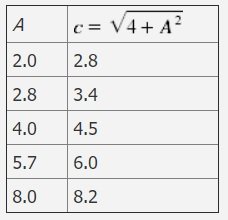Events & Promotions
|
|

GMAT Club Daily Prep
Thank you for using the timer - this advanced tool can estimate your performance and suggest more practice questions. We have subscribed you to Daily Prep Questions via email.
Customized
for You
Track
Your Progress
Practice
Pays
Not interested in getting valuable practice questions and articles delivered to your email? No problem, unsubscribe here.
- Nov 18
11:00 AM PST
-12:00 PM PST
Join us in a live GMAT practice session and solve 30 challenging GMAT questions with other test takers in timed conditions, covering GMAT Quant, Data Sufficiency, Data Insights, Reading Comprehension, and Critical Reasoning questions. - Nov 22
11:00 AM IST
-01:00 PM IST
Do RC/MSR passages scare you? e-GMAT is conducting a masterclass to help you learn – Learn effective reading strategies Tackle difficult RC & MSR with confidence Excel in timed test environment - Nov 23
11:00 AM IST
-01:00 PM IST
Attend this free GMAT Algebra Webinar and learn how to master the most challenging Inequalities and Absolute Value problems with ease. - Nov 25
10:00 AM EST
-11:00 AM EST
Prefer video-based learning? The Target Test Prep OnDemand course is a one-of-a-kind video masterclass featuring 400 hours of lecture-style teaching by Scott Woodbury-Stewart, founder of Target Test Prep and one of the most accomplished GMAT instructors.
Kudos
Bookmarks
C: 2.8
A: 2.0
Be sure to select an answer first to save it in the Error Log before revealing the correct answer (OA)!
Difficulty:
 65%
(hard)
65%
(hard)
Question Stats:
74% (02:44) correct 26%
(02:58)
wrong
26%
(02:58)
wrong  based on 860
sessions
based on 860
sessions
History
Date
Time
Result
Not Attempted Yet
A farmer has a plot of land whose boundary is formed by two perpendicular roads and forms a right triangle. The length of the boundary along one of the roads is 2 kilometers (km), the length of the boundary along the other road is b km, the length of the longest side of the boundary is c km, and the area is A km^2.
In the table, select the value that is closest to c and the value that is closest to A so that the values are jointly consistent with the given information. Make only two selections, one in each column.
In the table, select the value that is closest to c and the value that is closest to A so that the values are jointly consistent with the given information. Make only two selections, one in each column.
| C | A | |
| 2.0 | ||
| 2.8 | ||
| 4.0 | ||
| 5.7 | ||
| 8.0 |
ShowHide Answer
Official Answer
C: 2.8
A: 2.0
Kudos
Bookmarks
Official Explanation
RO1
The sides of the plot’s boundary that form the right angle of the triangle are 2 km and b km long, and the longest side is c km long. Using the Pythagorean Theorem, \(c^2 = 2^2 + b^2 = 4 + b^2.\) Taking the square root of each side gives \(\sqrt{4+b^2}\). The area of the triangle, A km, can be found using the equation \(\frac{1}{2}(base)(height).\)\(=\frac{1}{2}(b)(2)\) Since A = b, A can be substituted into the previous expression: \(c=\sqrt{4+A^2}\). Using this equation, the value of c can be calculated for each possible value of A. The table below shows the calculations, rounded to the nearest tenth:

3.jpg [ 13.7 KiB | Viewed 14345 times ]
The only one of these values of c that is among the options given is 2.8.
The correct answer is 2.8.
RO2
As shown in the table provided in the analysis for RO1, c = 2.8 corresponds to A = 2.0.
The correct answer is 2.0.
RO1
The sides of the plot’s boundary that form the right angle of the triangle are 2 km and b km long, and the longest side is c km long. Using the Pythagorean Theorem, \(c^2 = 2^2 + b^2 = 4 + b^2.\) Taking the square root of each side gives \(\sqrt{4+b^2}\). The area of the triangle, A km, can be found using the equation \(\frac{1}{2}(base)(height).\)\(=\frac{1}{2}(b)(2)\) Since A = b, A can be substituted into the previous expression: \(c=\sqrt{4+A^2}\). Using this equation, the value of c can be calculated for each possible value of A. The table below shows the calculations, rounded to the nearest tenth:
Attachment:
3.jpg [ 13.7 KiB | Viewed 14345 times ]
The only one of these values of c that is among the options given is 2.8.
The correct answer is 2.8.
RO2
As shown in the table provided in the analysis for RO1, c = 2.8 corresponds to A = 2.0.
The correct answer is 2.0.
General Discussion
Kudos
Bookmarks
For the right triangular land, with two sides 2 and b , and longest side c -
Area A = 2xb/2 = b ---(1)
c = sq root (b^2 + 2^2) = sq root ( b^2 + 4) ---(2)
From (1) and (2),
A = b,
c = sq root ( A^2 + 4).
If A = 2, then c= sq root (4 + 4) = 2.82
if A = 2.8, then c= sq root (11.84) = 3.44
if A = 4, then c= sq root (20) = 4.47
...
Thus ,
A =2
C = 2.8
Area A = 2xb/2 = b ---(1)
c = sq root (b^2 + 2^2) = sq root ( b^2 + 4) ---(2)
From (1) and (2),
A = b,
c = sq root ( A^2 + 4).
If A = 2, then c= sq root (4 + 4) = 2.82
if A = 2.8, then c= sq root (11.84) = 3.44
if A = 4, then c= sq root (20) = 4.47
...
Thus ,
A =2
C = 2.8













